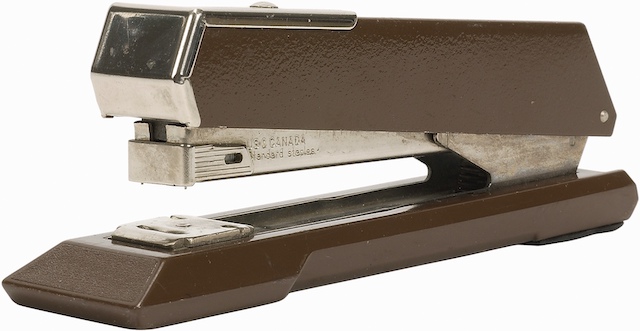How To Increase Iron Levels Quickly
Iron is a vital mineral essential for various bodily functions, including oxygen transport, energy production, and immune support. Many people, especially those with dietary restrictions or increased nutritional needs, may find themselves dealing with low iron levels. Understanding how to increase iron levels quickly is crucial for maintaining optimal health and preventing deficiencies. This article will provide practical strategies and dietary recommendations to help you boost your iron levels effectively.
Understanding iron deficiency
Before delving into ways to increase iron levels quickly, it’s essential to understand what iron deficiency is and why it occurs. Iron deficiency can lead to anemia, characterized by fatigue, weakness, pale skin, and decreased immunity. Factors contributing to low iron levels include:
-
- Inadequate dietary intake: Not consuming enough iron-rich foods.
- Increased needs: Life stages such as pregnancy, growth spurts in children, and intense physical activity can elevate iron requirements.
- Absorption issues: Certain medical conditions or medications can impair the body’s ability to absorb iron.
- Blood loss: Heavy menstrual periods, gastrointestinal bleeding, or injuries can deplete iron stores.
Recognising symptoms of low iron levels
Understanding the signs of low iron levels can help you take timely action. Common symptoms include:
-
- Fatigue and weakness
- Dizziness or lightheadedness
- Shortness of breath
- Brittle nails
- Cold hands and feet
- Fast heartbeat
If you experience these symptoms, it may be time to assess your iron intake and consider strategies to increase it.
Dietary sources of iron
One of the most effective ways to increase iron levels quickly is through diet. There are two types of dietary iron: heme and non-heme.
Heme iron
Heme iron is derived from animal sources and is more readily absorbed by the body. Foods high in heme iron include:
-
-
- Red meat: Beef and lamb
- Poultry: Chicken and turkey, especially dark meat
- Fish and seafood: Oysters, clams, and sardines
-
Non-heme iron
Non-heme iron comes from plant sources and is not as easily absorbed. However, it still plays a crucial role in overall iron intake. Sources of non-heme iron include:
-
-
- Legumes: Lentils, chickpeas, and beans
- Nuts and seeds: Pumpkin seeds, sesame seeds, and cashews
- Leafy greens: Spinach, kale, and Swiss chard
- Whole grains: Quinoa, brown rice, and fortified cereals
-
Incorporating a combination of heme and non-heme iron sources into your diet can help you increase iron levels more effectively.
Strategies to increase iron levels quickly
1) Optimise your iron-rich meals
To increase iron levels quickly, focus on incorporating iron-rich foods into your meals. Here are some tips for optimising your meals:
-
-
- Start with a base of iron-rich foods: Use lentils, beans, or spinach as a base for salads and stir-fries.
- Add protein: Include a source of heme iron, such as grilled chicken or beef, to enhance the meal’s iron content.
- Include vitamin C-rich foods: Adding citrus fruits, bell peppers, or tomatoes to meals can significantly boost the absorption of non-heme iron.
-
2) Combine foods wisely
Pairing iron-rich foods with those that enhance absorption can make a significant difference. Here are some combinations to consider:
-
-
- Iron and vitamin C: Pair a spinach salad with orange slices or a lentil stew with tomatoes.
- Iron and fermented foods: Consuming foods like yogurt or sauerkraut with iron-rich meals may improve absorption due to their beneficial bacteria.
-
3) Cook with cast iron cookware
Using cast iron cookware can enhance the iron content of your food. Cooking acidic foods like tomato sauce in cast iron can leach small amounts of iron into the dish, providing an additional boost to your iron intake.
4) Avoid iron inhibitors
Certain substances can inhibit iron absorption. To maximise iron levels quickly, consider the following:
-
-
- Limit calcium-rich foods during iron meals: Calcium competes with iron for absorption. Try to consume dairy products separately from iron-rich meals.
- Be cautious with tannins: Beverages like tea and coffee contain tannins that can hinder iron absorption. Avoid drinking these during or right after meals.
-
5) Incorporate iron supplements
If dietary changes are insufficient, iron supplements can be an effective way to increase iron levels quickly. There are various forms of iron supplements available, including ferrous sulfate, ferrous gluconate, and ferrous fumarate. Here are some tips for taking supplements:
-
-
- Consult with a healthcare professional: Before starting any supplement, it’s essential to consult with a healthcare provider to determine the appropriate dosage and form for your needs.
- Take on an empty stomach: Iron is best absorbed when taken on an empty stomach. However, if you experience gastrointestinal discomfort, consider taking it with a small amount of food.
- Pair with vitamin C: Taking your iron supplement with vitamin C can enhance absorption.
-
6) Focus on high-iron snacks
Incorporating iron-rich snacks into your diet can help boost levels throughout the day. Here are some nutritious options:
-
-
- Nuts and seeds: A handful of almonds or pumpkin seeds can provide a quick iron boost.
- Dark chocolate: Dark chocolate contains iron and can satisfy sweet cravings while contributing to your intake.
- Fortified cereals: Many breakfast cereals are fortified with iron. Pair them with fruits high in vitamin C for an added benefit.
-
7) Consider your lifestyle
Certain lifestyle factors can impact iron levels. Here are some considerations:
-
-
- Regular check-ups: Regular health check-ups can help monitor your iron levels, especially if you are at risk for deficiency.
- Manage blood loss: If you have heavy menstrual periods or other sources of blood loss, discuss management strategies with your healthcare provider to minimise iron depletion.
-
8) Hydration matters
Staying well-hydrated is essential for overall health, but it can also support nutrient absorption. Drinking enough water helps maintain optimal bodily functions, including digestion and nutrient transport. Aim for adequate hydration throughout the day.
Monitoring your progress
After implementing these strategies, it’s essential to monitor your progress. Consider keeping a food diary to track your iron intake and symptoms. Additionally, follow up with your healthcare provider to assess your iron levels through blood tests. This can help determine if your efforts are effective or if further interventions are needed.
Maintain iron levels
Increasing iron levels quickly is achievable through a combination of dietary strategies, lifestyle changes, and supplements when necessary. By understanding the types of iron, optimizing your meals, and being mindful of absorption factors, you can effectively boost your iron intake. Remember to consult with a healthcare professional before making significant changes or starting supplements, especially if you suspect a deficiency. With the right approach, you can achieve and maintain healthy iron levels, enhancing your overall well-being and energy.



